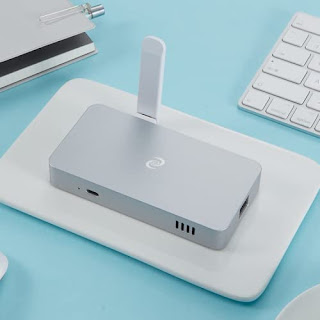Cryptocurrency nodes are an essential component of decentralized networks. They help to validate transactions and maintain the integrity of the blockchain, making it possible for users to transact with each other without relying on a central authority. However, running a cryptocurrency node can be expensive, requiring powerful hardware and a significant amount of storage space. In this post, we'll explore some cryptocurrency nodes that you can run without spending a lot of money and how you might be able to make money by running one.
Bitcoin Core is the official Bitcoin node, and it is free to download and run. However, it does require a lot of storage space and processing power to run, so it may not be the best option for those who are running a node on a budget.
Bitcoincore.org If you're looking for a more lightweight option, Litecoin Core may be a good choice. It doesn't require as much storage space or processing power as Bitcoin Core, so it may be more accessible to those who don't have a lot of resources to spare.
Litecoin.org
Another popular cryptocurrency node is Ethereum Go. Ethereum Go is the official Ethereum node, and it is also free to download and run. It's designed to be lightweight and efficient, so it may be a good option if you don't have a lot of computing power to spare. Additionally, Ethereum offers staking rewards to node operators, which can be a source of passive income for those who are running a node.
Geth.Ethereum.org
Dash Core is the official Dash node, and it is also free to download and run. It's designed to be lightweight and efficient, making it a good choice for those who are running a node on a budget. Additionally, Dash offers master node rewards to node operators, which can be a source of passive income.
Dash.org
While running a cryptocurrency node can be a rewarding experience, it's important to keep in mind that it's not a guaranteed source of income. If you're interested in making money by running a node, there are a few different strategies you can try. One option is to stake your own cryptocurrency and earn staking rewards. Many cryptocurrencies offer staking rewards to node operators, which can be a source of passive income. However, the number of rewards you earn will depend on a variety of factors, such as the amount of cryptocurrency you stake, the current network difficulty, and the price of the cryptocurrency.
Another way to make money by running a cryptocurrency node is by processing transactions on the network. Some cryptocurrencies pay node operators a small fee for processing transactions, which can add up over time. However, these fees are typically very small, and you'll need to process a large number of transactions to earn a significant amount of money.
Running a cryptocurrency node is an important way to support decentralized networks and help to maintain the integrity of the blockchain. While it can be expensive to run a node, there are several cryptocurrency nodes that you can run without spending a lot of money. Additionally, there are a few different strategies you can try to make money by running a node, such as staking your own cryptocurrency or processing transactions on the network.
A light node and a master node are two different types of nodes that can be used in a blockchain network.
A light node, also known as a thin client or SPV (Simplified Payment Verification) node, is a type of node that doesn't download and validate the entire blockchain. Instead, it only downloads the block headers and some other basic information from the network. This makes light nodes much lighter in terms of storage and bandwidth requirements compared to full nodes. However, they also provide less security and decentralization since they rely on other nodes to validate transactions.
On the other hand, a master node is a type of full node that performs additional functions beyond simply validating transactions. Masternodes typically require a higher amount of collateral in the form of the cryptocurrency they are supporting, which is locked up as a security deposit. In return, master node operators receive rewards for providing additional services to the network, such as instant transactions, privacy features, and governance functions. Masternodes are typically used in proof-of-stake (PoS) blockchain networks, where they help to secure the network and provide additional functionality.
In summary, a light node is a simpler and lighter version of a full node that provides less security and decentralization, while a master node is a type of full node that provides additional functionality and rewards to its operator in exchange for a higher collateral requirement. Both types of nodes have their own benefits and drawbacks, and the choice of which one to use will depend on the specific needs and use case of the user.
More Articles Below









